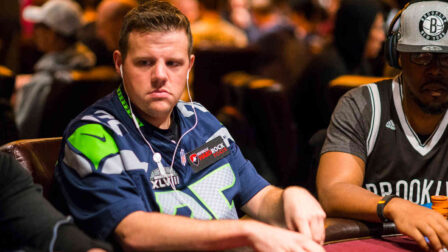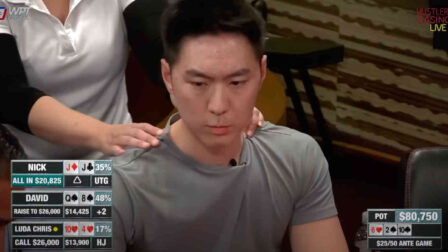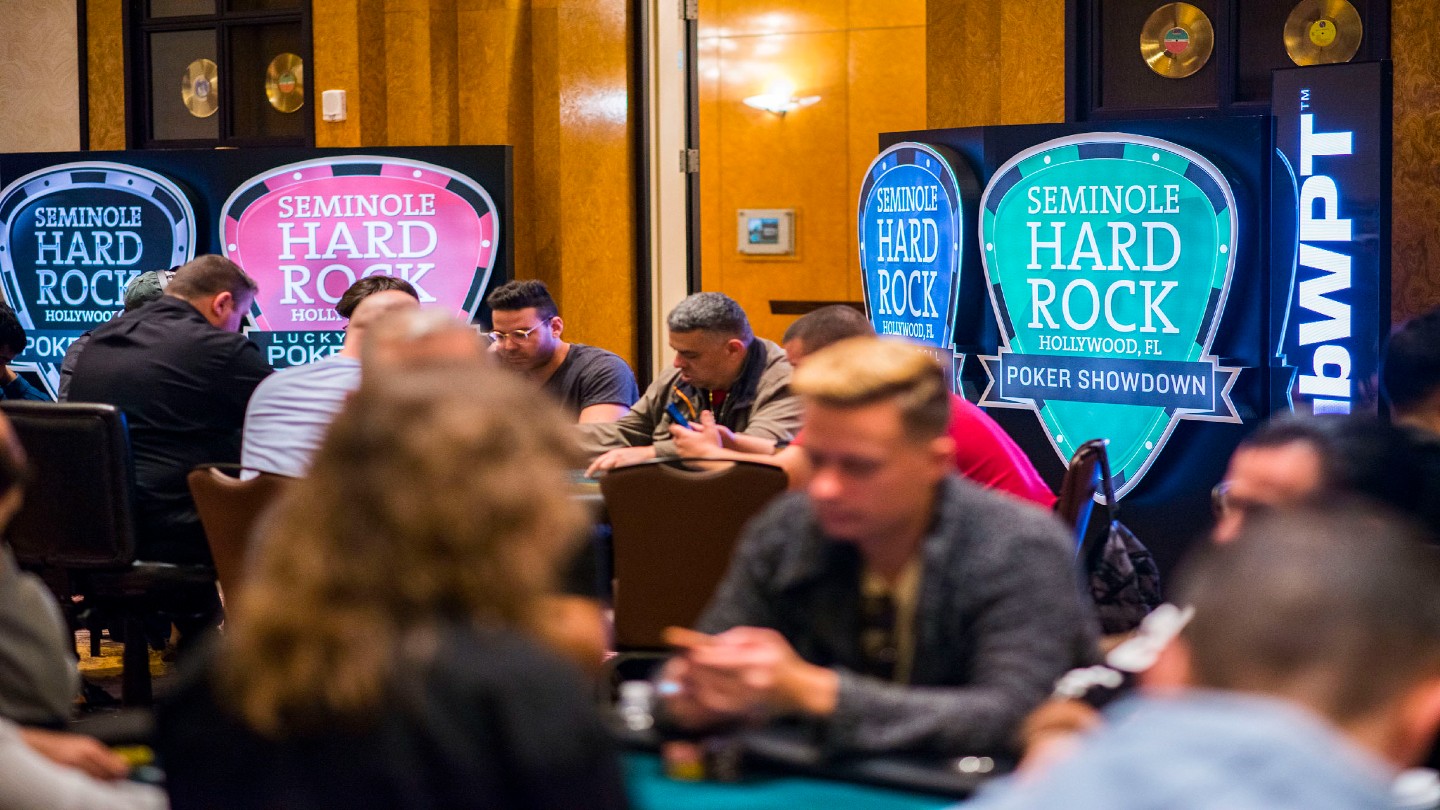Top Tips for 3-Betting With a Short Stack

4 minutes
Last Updated: February 25, 2024
If you want to increase your edge at the tables even further, make sure to check the Pokercoaching training site.
…
In this article, we’ll cover the topic of 3-betting in and out of position when on a short stack, mostly looking at the 25 – 30 big blinds range.
This is quite a common scenario in tournaments, so it’s important to master this particular segment of the game and know what types of adjustments you need to make based on the hands and the overall tournament situation.
First, we’ll look at 3-betting adjustments based purely on chip EV, i.e., without considering other factors. Then, we’ll move on to look at adjustments with the risk premium considered, i.e., as the tournament field starts to dwindle and the money bubble approaches.
Chip EV & 3-Betting Adjustments
When looking at in-position scenarios with a 30 big blind stack, the first thing you’ll notice is that our calling ranges become wider. We want to 3-bet less and trap more with our very strong hands.
For example, when playing on a button against a CO open, there are certain hands that we want to just move all in with and then a fair number of hands like pocket pairs down to pocket tens that we’ll be calling with.
There isn’t much trapping with these hands happening at 40bb+. However, at 25 – 30 big blinds, we don’t need as much protection as stacks are much shallower, and this strategy allows us to trap players in the blinds who try to go for a squeeze.
There are very few 3-bet bluffs, and the only pure 3-bets that we do for value are hands like AKs and AQs, as these hands have a lot of equity against the calling range.
An added benefit of having these strong hands in our calling range is that it allows us to see the flops with weaker hands that play well. We can now proceed to flops with hands like T9s, J9s, QTs, etc.
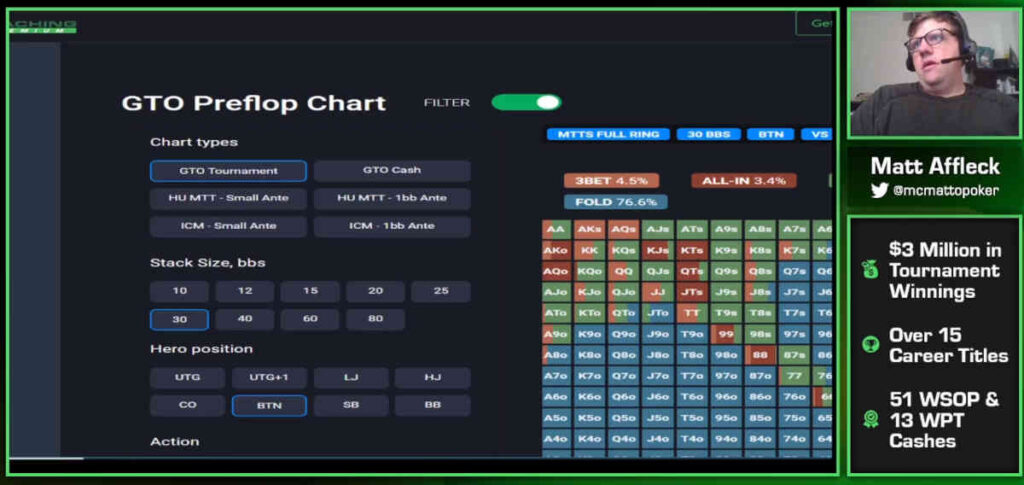
An important thing to note is that as we get shallower, moving down to 25 and 20 blinds, there are fewer and fewer 3-bets. On a 20 big blind stack in position, we will have only traps and all-ins, and no pure 3-bets whatsoever.
As a final thought on the IP play, always pay attention to the stacks of the players in the blinds, as having extremely short stacks in the blinds will force us to somewhat adjust our strategy.
When playing out of position, things are a bit trickier. We have three options: call, 3-bet, or move all-in. Our calling range in the big blind will, naturally, be much wider.
When it comes to 3-betting, we’ll use the strongest part of our range to 3-bet and induce shoves. Weaker hands, like lower-suited broadways, can be used to shove and force folds from a large percentage of the opening range, including some hands that are ahead.
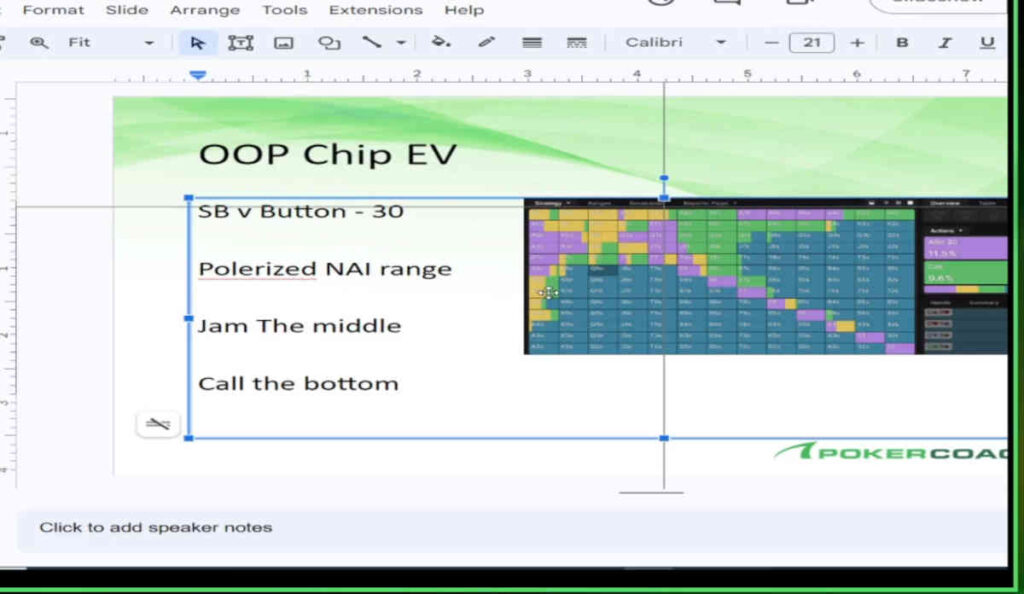
Accounting for the Risk Premium
Up until now, we’ve considered only chip EV without giving any consideration to the actual tournament situation. However, as players are eliminated from the field, the risk premium changes, which influences our strategy, including our 3-betting plans.
As the tournament field dwindles down, the EV of all poker hands is reduced. With this, our 3-bet frequency increases, while the percentage of hands we’ll use as flat calls drops significantly.
The main reason for this is that the EV of calling is now less. We can compare this situation to playing in cash games with very high rake. In these games, you normally want to do as little calling as possible and build pots before the flop as much as possible.
Compared to the earlier scenarios, pure calling hands now become marginal, while marginal calling hands have negative EV. When it comes to premium hands, slow-playing these becomes less profitable as well.
Looking at an example of button vs. CO ranges with the risk premium factored in and 37% of the tournament field left, we can see that there are no jams and no traps. For a hand to be a call, it has to be a pure call, and, as you can see below, this doesn’t include any off-suit hands.
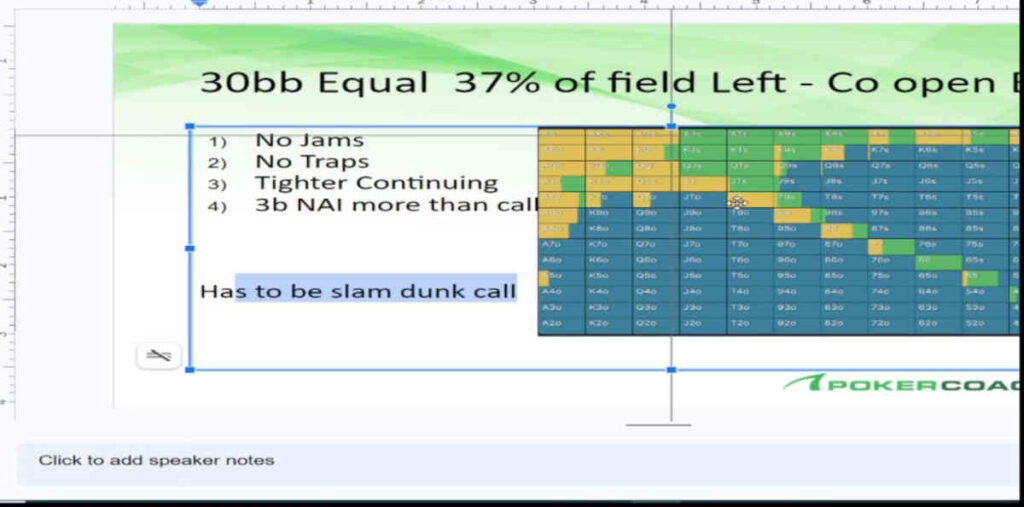
When playing out of position, there isn’t too much jamming, but our 3-betting range is quite wide, with a high percentage of 3-bet and call-off hands. When it comes to calling, suited Aces are a prime example of hands you’ll want in your calling range.
It may seem counter-intuitive to want to call with hands like A9s or ATs instead of 3-betting, but there is a good reason for this. With the risk premium factored in, bluff-catching becomes much harder.
Having these hands in our calling range allows us to get to more turns and rivers with made hands we’re pretty confident about instead of being forced to call down only with unattractive hands that put us in a tough spot.
Short Stack & 3-Betting Summary
Learning to navigate short stack spots and properly structure your 3-betting ranges is very important. This article doesn’t explain all the intricacies of this particular segment of the game, but it should help nudge you in the right direction.
The two biggest takeaways are probably that there is much more calling happening in situations where there is no risk premium involved and that our strategy takes a pretty big turn once the risk premium comes into play.
The best way to improve this part of your game is to take the time to understand why poker solvers suggest these strategies in the first place. With this foundation, you’ll be in a good spot to continue learning and expanding your knowledge based on a proper understanding of these situations.















